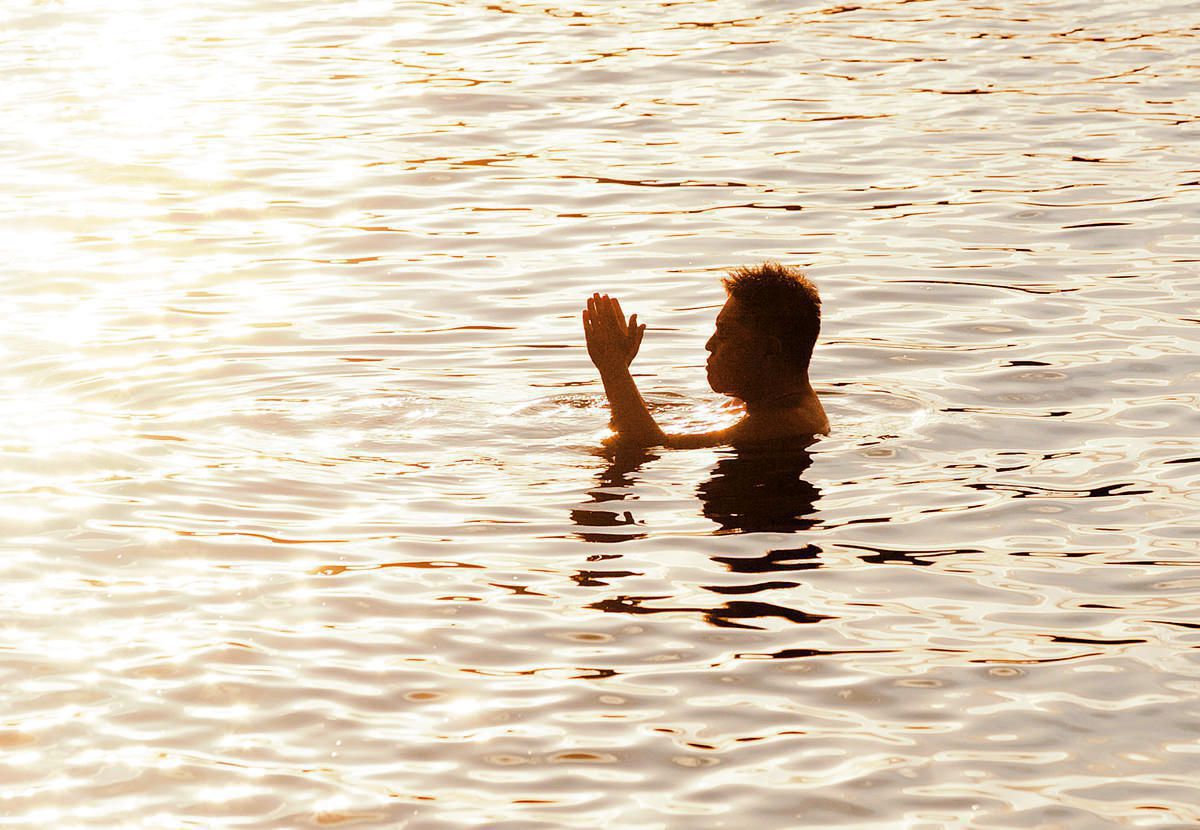Shimbaru-Nuyama Mounded Tomb Group
With the support of the early Japanese governing powers, they began to worship the Three Female Deities of Munakata at the three shrines of Munakata Taisha.
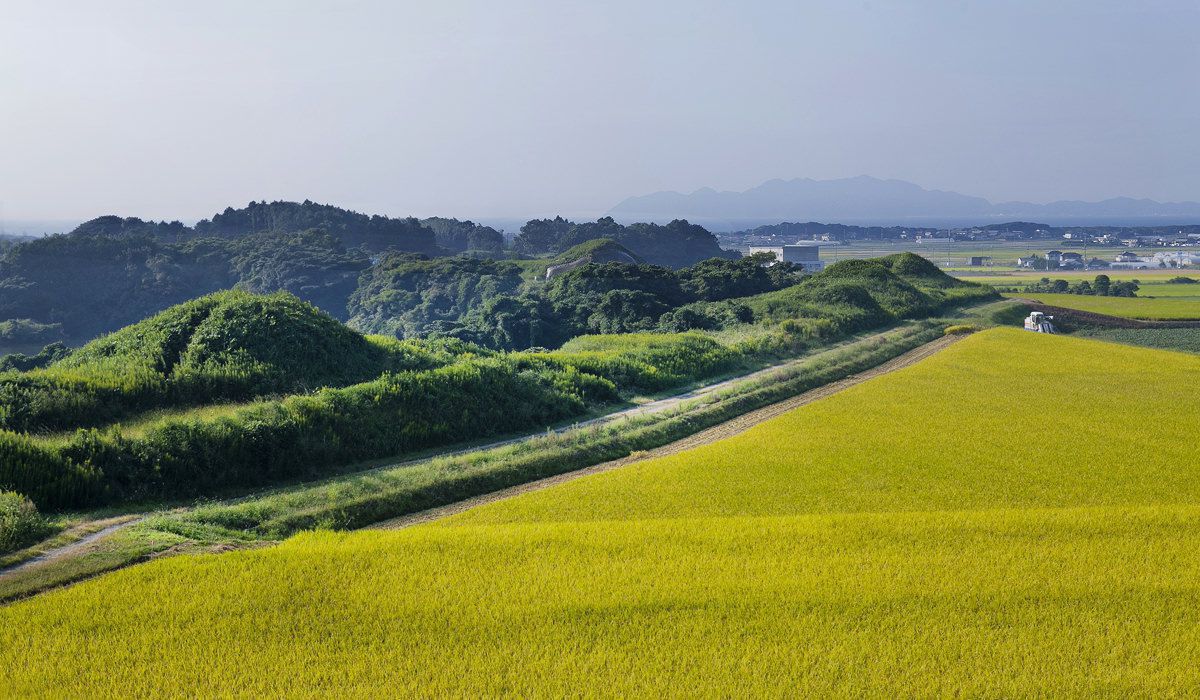
The Shimbaru-Nuyama Mounded Tomb Group, which was constructed from the 5th to the 6th centuries, offers tangible evidence concerning the Munakata clan who sustained the living tradition of worshipping Okinoshima.
The Munakata region forms an integrated sea space that links Kyushu, where a large sea inlet once existed, with Okinoshima, and with Oshima, which is situated between them.
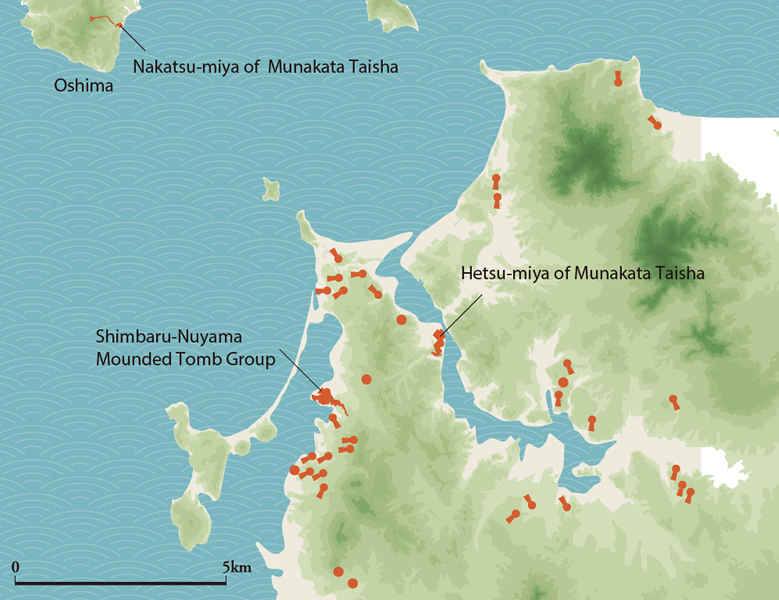
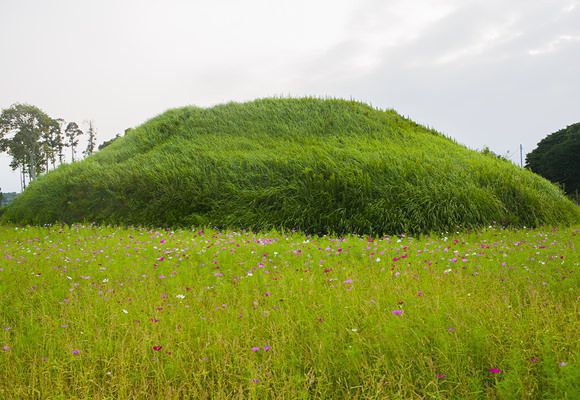
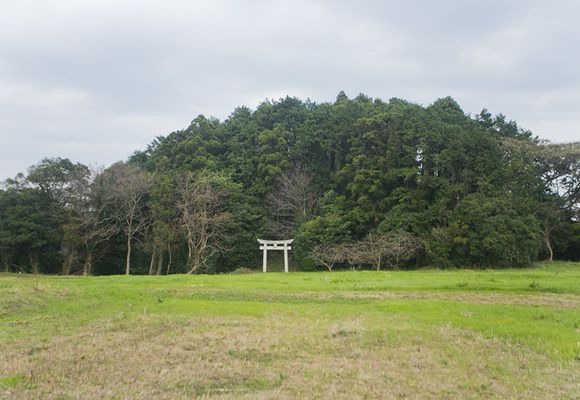
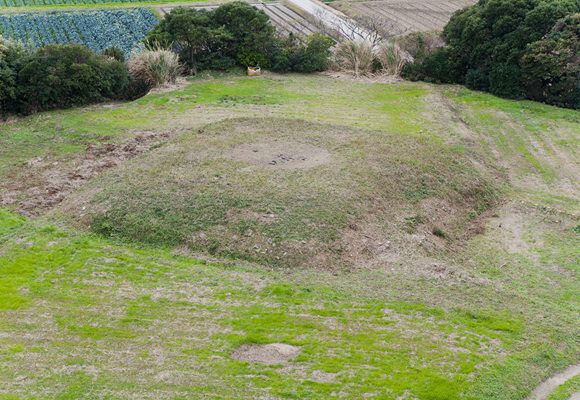
The Shimbaru-Nuyama Mounded Tomb Group is located beside the agricultural land that was once a sea inlet, on a plateau overlooking the sea that stretches out toward Okinoshima.
It consists of both large and small burial mounds, including keyhole-shaped, round, and square mounded tombs built close together along the plateau.
These tombs bear witness to the lives of members of the Munakata clan, who played a key role in overseas exchanges and nurtured a tradition of worshipping Okinoshima.
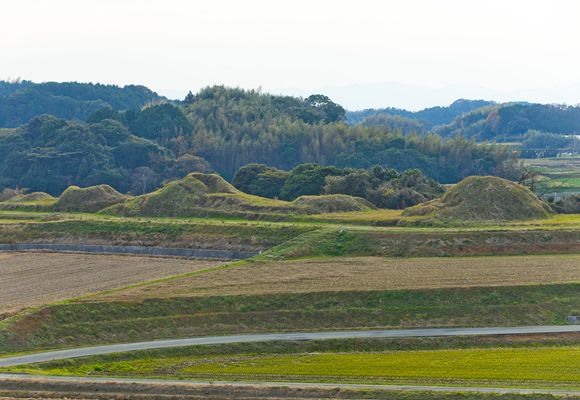
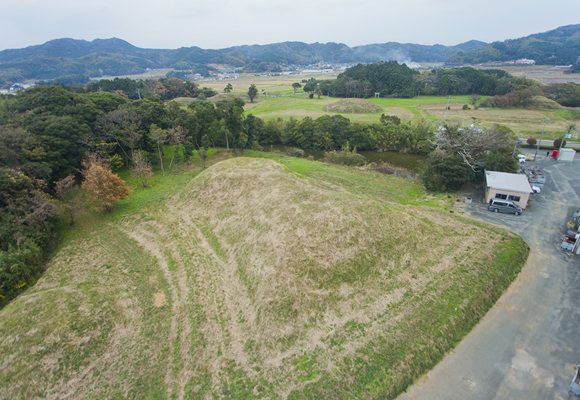
Remote Worship and Taboos
Okinoshima have been preserved almost intact to the present day because of their geographical location, which defies easy access, and local religious traditions such as strict taboos that protect the sacred island. The ancient faith in Okinoshima survives to this day.
Okitsu-miya Yohaisho, which had been built on the northern shore of Oshima by the 18th century, is the place from which to worship Okinoshima, since people are not normally allowed to visit the island. It functions as a hall for worshipping the sacred island from afar.
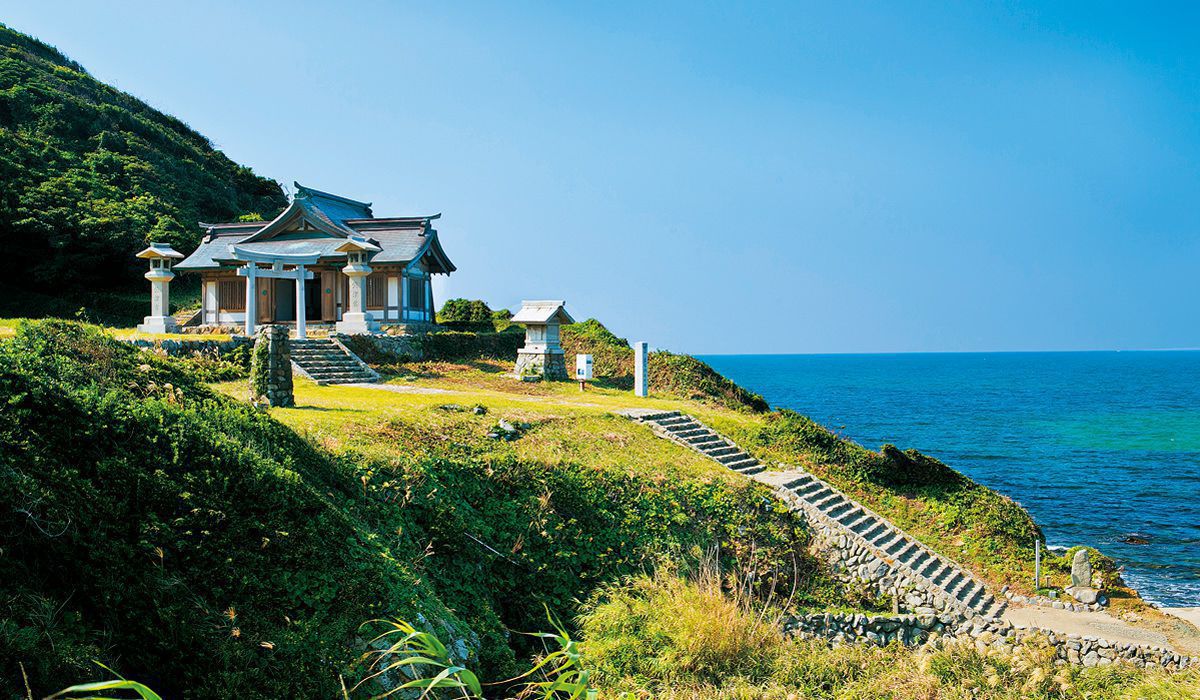
The Munakata Daiguji (high priest) family, which prospered through its engagement with international trade, continued the tradition of worship at Munakata Taisha when ancient rituals were no longer performed there.
Even since the family's lineage was interrupted at the end of the 16th century, priests and local people have supported the tradition to this day. The people of Munakata have long fished the waters near Okinoshima, and guards were stationed on the island from the 17th century onward to protect its ocean boundaries; yet customs such as taboos strictly forbidding ordinary people from delivering or removing any object to or from the sacred island have continued to be respected. Some taboos still survive today.
Taboos on Okinoshima
- Vow of Silence
- One must never speak a word about what one has seen or heard on Okinoshima.
People even refrain from uttering its name, and respectfully refer to it instead in other ways, such as by calling it the "island whose name cannot be spoken."
- No Removal of Objects
- Removal of any object from Okinoshima is prohibited. According to legend, the breaking of this rule during the Edo period (17th century) brought about divine retribution. Thanks to this tradition, the ritual sites and treasures on the island have been preserved almost intact.
- Purification
- No one can disembark on Okinoshima without permission from Munakata Taisha.
Even the priest who offers a religious service there every day must purify his mind and body by immersing himself in the sea before he lands on the island.
